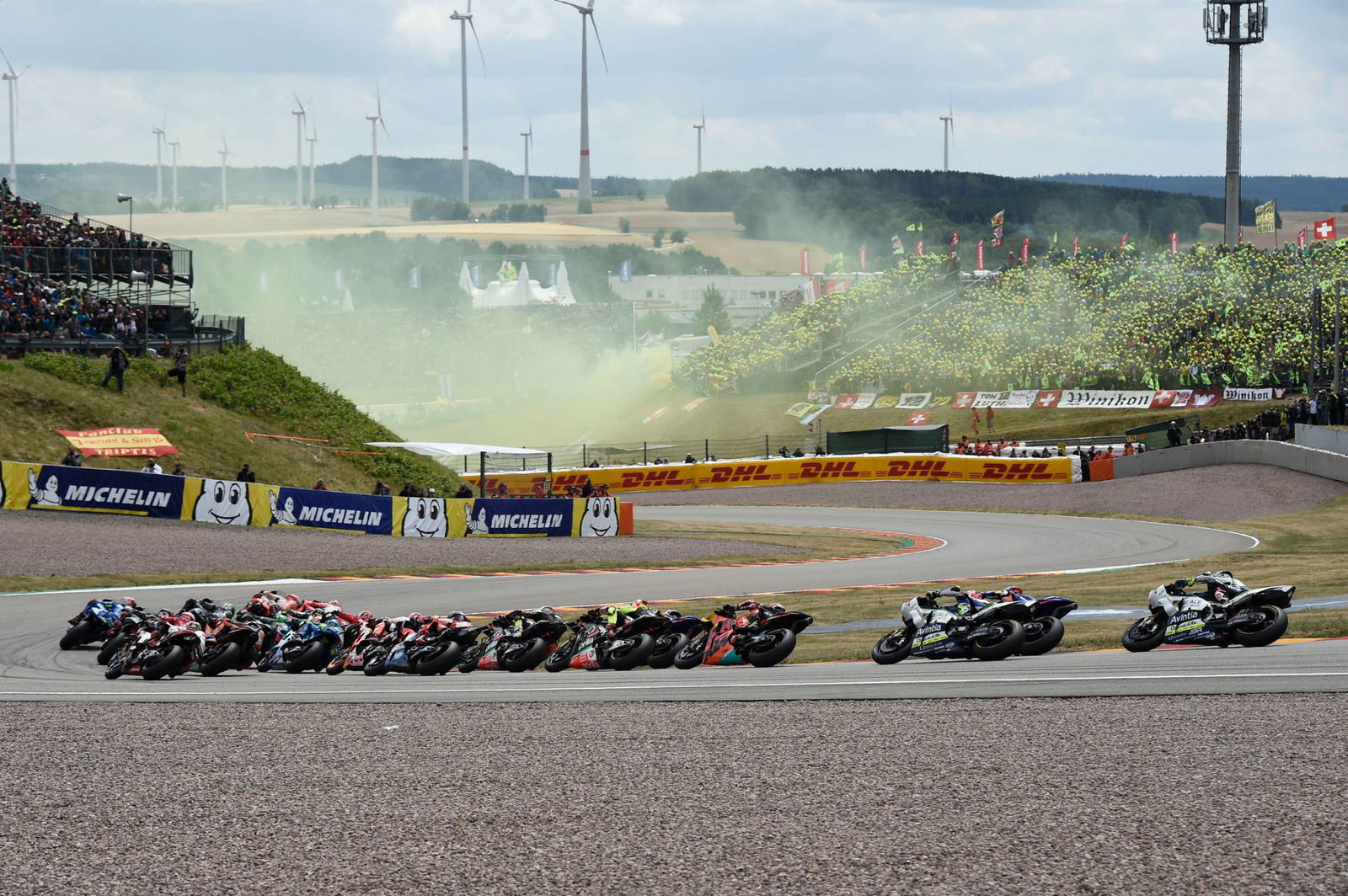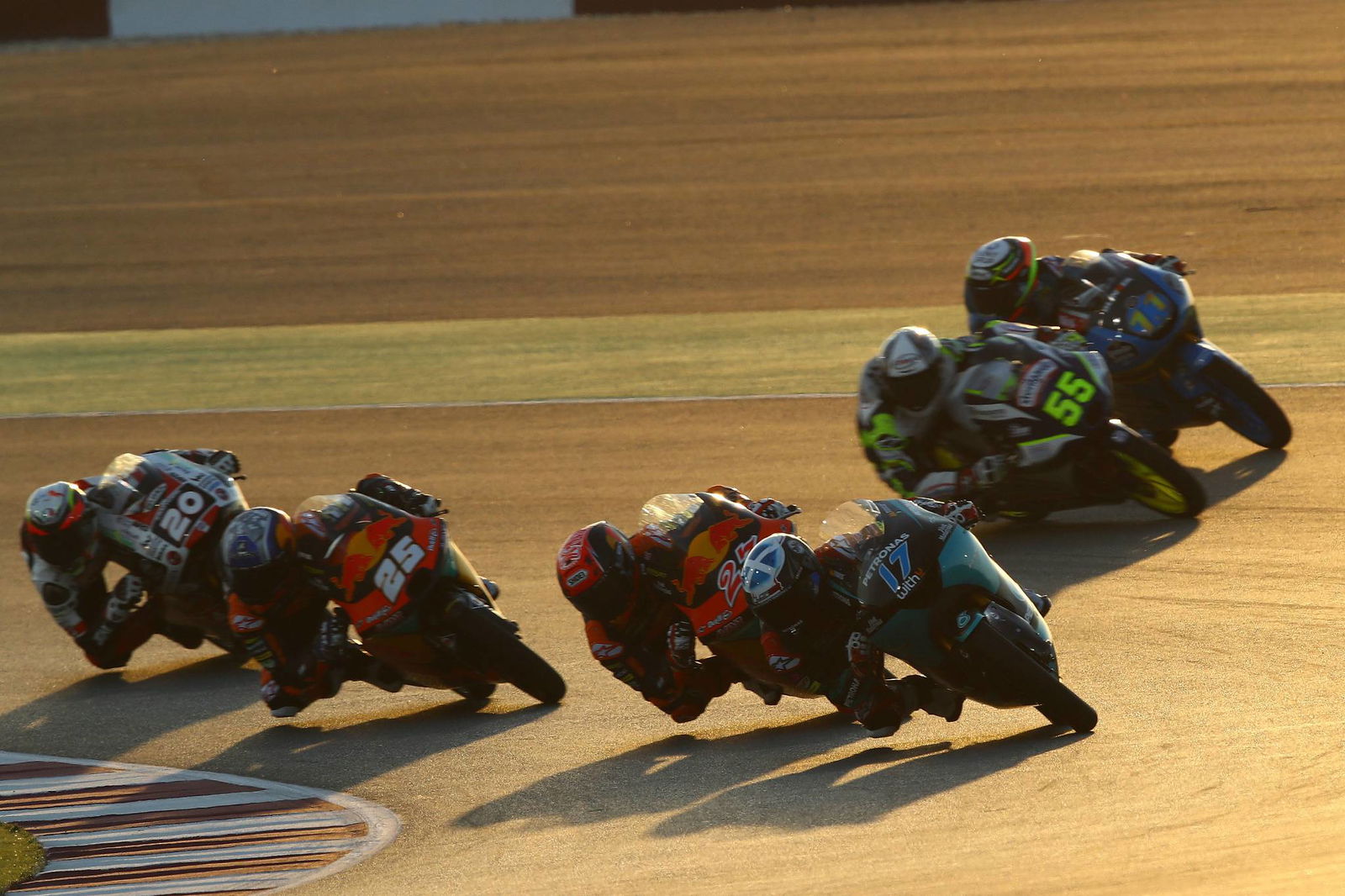Official: MotoGP freezes engine, aero development until 2022
MotoGP has officially confirmed a freeze on the usual engine and aerodynamic developments for both the 2020 and 2021 seasons.
Amid concerns over the financial impact the coronavirus will have on MotoGP participants, the Grand Prix Commission met to nail down methods to cut costs.
'These changes are designed to reduce the costs incurred by the ongoing COVID-19 crisis whilst maintaining fairness and equality in order to conserve the entertainment value of the sport and the integrity of the competition,' said a statement from the GP Commission.

MotoGP has officially confirmed a freeze on the usual engine and aerodynamic developments for both the 2020 and 2021 seasons.
Amid concerns over the financial impact the coronavirus will have on MotoGP participants, the Grand Prix Commission met to nail down methods to cut costs.
'These changes are designed to reduce the costs incurred by the ongoing COVID-19 crisis whilst maintaining fairness and equality in order to conserve the entertainment value of the sport and the integrity of the competition,' said a statement from the GP Commission.
The decision to freeze development until the start of the 2022 season had been revealed by Crash.net last week, with Tech3 team boss and IRTA president Herve Poncharal explaining why it is so vital for the sport to save money in response to the ongoing coronavirus pandemic.
MotoGP has duly announced changes to the normal engine and aerodynamic development rules for 2020 and 2021, with no updates permitted to the March 2020 homologated parts for the rest of this season, which applies to both Concession and non-Concession manufacturers.
All teams will then start the 2021 world championship again using the March 2020 engine and aerodynamics, after which they will be able to make one aerodynamic upgrade during next season (effectively the update carried over from the 2020 season).
Concession teams (currently KTM and Aprilia) will also be allowed to upgrade their engines as usual during next year, but the non-Concession teams will be using the same engine spec from March 2020 until the end of the 2021 season.
The normal cycle of engine and aerodynamic development is then set to resume in 2022.
All other parts of the MotoGP machines, such as chassis and electronics, are still not covered by any development freeze.
However, the whole motorcycle will be frozen for the next two seasons in both the Moto2 and Moto3 classes, where officials have also outlawed the use of ride height devices.
It is still unclear when and where racing will be able to take place in 2020, but a shortened season of around 10 rounds is currently forecast.
Full FIM Grand Prix Commission statement:
Technical Regulations
In view of the Covid-19 global crisis, and following various conversations with manufacturers and teams in all classes, the GPC has approved the following technical proposals.
These are all aimed at reducing costs globally in all three classes for both manufacturers and teams, whilst maintaining fairness and equality in order to conserve both the entertainment value of the sport and the integrity of the competition.
MOTOGP CLASS:
Currently, all manufacturers that don’t qualify for concessions have to homologate an engine specification for the whole season. Manufacturers are allowed to homologate a different specification for riders in Independent teams.
Until now, manufacturers with concessions didn’t have this limitation and could change specification during the year. In addition, all manufacturers were allowed two aero body designs per rider per season; the one they started with at Qatar plus one upgrade.
The GPC has approved the following changes, effective immediately:
2020 SEASON:
There will be no update of any homologated parts during the 2020 season. This applies to all manufacturers, both Non-Concession and Concession.
2021 SEASON:
Both Non-Concession and Concession manufacturers must start the 2021 season using March 2020 homologated parts. Thereafter, normal upgrade regulations will apply for the rest of the 2021 season as per current regulations meaning no engine evolution for non-concession manufacturers and only one aero-body update per rider for all manufacturers.
For the first event of 2021 riders will be allowed to choose between any engine or aero-body specification that the manufacturer homologated in 2020.
MOTO2 CLASS:
The organisers supply all Moto2 Class riders with equal Triumph 765cc engines.
Until now, the only limitation in terms of allocations of technical parts was the allowance of one upgrade to the Aero Body per manufacturer.
The GPC has approved the following changes, effective immediately:
AERO BODY:
The current 2020 Aero Bodies as homologated by the chassis manufacturers at the 2020 Qatar GP, plus any version homologated in 2019, will be frozen until the end of the 2021 season. No further upgrades are permitted.
FRAME AND SWINGARM:
Each chassis manufacturer may submit any current or previously used frame or swingarm for homologation. These designs will be frozen until the end of the 2021 season, with no further specifications permitted.
Each Team will then be required to declare a maximum of 2 specifications of frame and swingarm per rider from their chassis manufacturer homologation list. Any replacement or substitute rider will be required to use only the declared parts for the rider they are replacing.
MOTO3 CLASS:
Currently in the Moto3 class, the manufacturers must provide all their riders with the same full bike. Until now, riders were allowed to choose 2 gear ratios per season.
The GPC has approved the following changes effective immediately:
Bike specification, as declared by each manufacturer at the Qatar GP 2020, will be frozen for the 2020 and the 2021 seasons, meaning no further upgrades will be permitted on any listed performance parts, chassis, swingarm, engine, aero body, gearbox or throttle body.
The GPC has also approved the number of engines each rider is allowed to use with respect to possible revised calendars for both 2020 and 2021. These will be published within the revised regulations.
MOTO2 AND MOTO3 CLASSES:
RIDE HEIGHT DEVICES BANNED
Ride height devices, to aid the rider during the start of the race, are permitted within the current rules for MotoGP. However, due to possible high development cost that these devices could require, it is felt that this technology does not fit within the ethos of both Moto3 and Moto2 of a cost-effective championship. Therefore, the such technology is banned for these two categories, with immediate effect. The use of any device that modifies or adjusts the motorcycle’s ride height while it is moving is forbidden.

